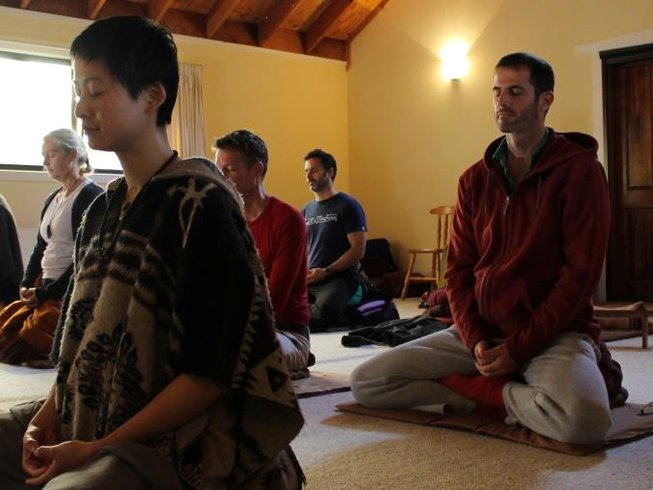
Many of us can be silent for an hour a day, sometimes two. Some can go a whole day in silence. But how many of us can do ten days of absolute silence, muting our words and slowing down our pace?
It is very difficult to imagine a world of utter silence. So much of our culture encourages us to “speak up” – to express our views, emotions, and feelings through words. Society has embedded in us the concept of communication, and that to discover others, and ourselves, we must communicate and interact.
Perhaps, in communicating too much, we have reached a point of saturation. Now, more and more people are retreating from their voice and finding comfort in silence. Instead of looking outwards, they are now looking inwards in hopes of discovering themselves. As such, we see a growing number of people now turn towards Vipassana meditation.
Finding silence in a noisy world
Vipassana meditation or insight meditation is the practice of self-observation with the aim of self-transformation. Vipassana means to see things as they really are. It is an ancient form of meditation said to have existed before the time of Buddha and then rediscovered by Buddha himself.
Equanimity. Non-reaction. Discipline. These are the kind of words used to describe Vipassana. In a nutshell, Vipassana meditation requires the mediator to sit in silence for hours on end, day after day, just being a spectator to his or her own self. You observe the hum of your breath with each inhalation and exhalation and be an outsider looking into your thoughts as your mind evokes memories from your past, experiences from the present and perhaps your hopes for the future. You acknowledge the dull pain that nags at you as your hands and legs gradually numb from being in one place for too long.
The goal of a Vipassana meditation is to train your mind to stop reacting to the ups and downs of life. You first focus non-reaction inwards, and then bring it outwards. As you were an observer of your mind, you now become an observer of your surroundings.
Where to begin
Vipassana meditation can be learned at a Vipassana center year-round through Vipassana meditation retreats. Following from the lineage of Buddha, modern-day Vipassana retreats take its roots from S.N. Goenka, who began teaching the technique in 1969.
Traditionally, Vipassana retreats take 7 weeks. However, in modern times, retreats are much shorter, with 10 days being a minimum. In those days, 9 are spent in complete silence. Anywhere you go in the world, the Vipassana structure is the same – meditation from 4 is to 9 pm with breaks in between.
What to expect
Expect a lot of silence. Vipassana retreats are also known as silent retreats, where students are to be in a state of “Noble silence” for most of their time there.
Expect also, for the practice to be difficult. Many first-time retreat-goers tend to drop out on the second day of their retreat.
Expect to struggle with yourself daily. As you quiet the world outside, the noise in your head gets louder and louder. The challenges, as you will discover on a Vipassana retreat, is inherent.
Lastly, expect to continue your meditation practice outside of the retreat. The recommended amount of practice time is two hours in a day, with one hour in the morning and one hour in the evening.
About Author:
Elaine is a contributing writer at BookMeditationRetreats.com. In her daily meditation, she has discovered that silence is indeed, truly golden.


